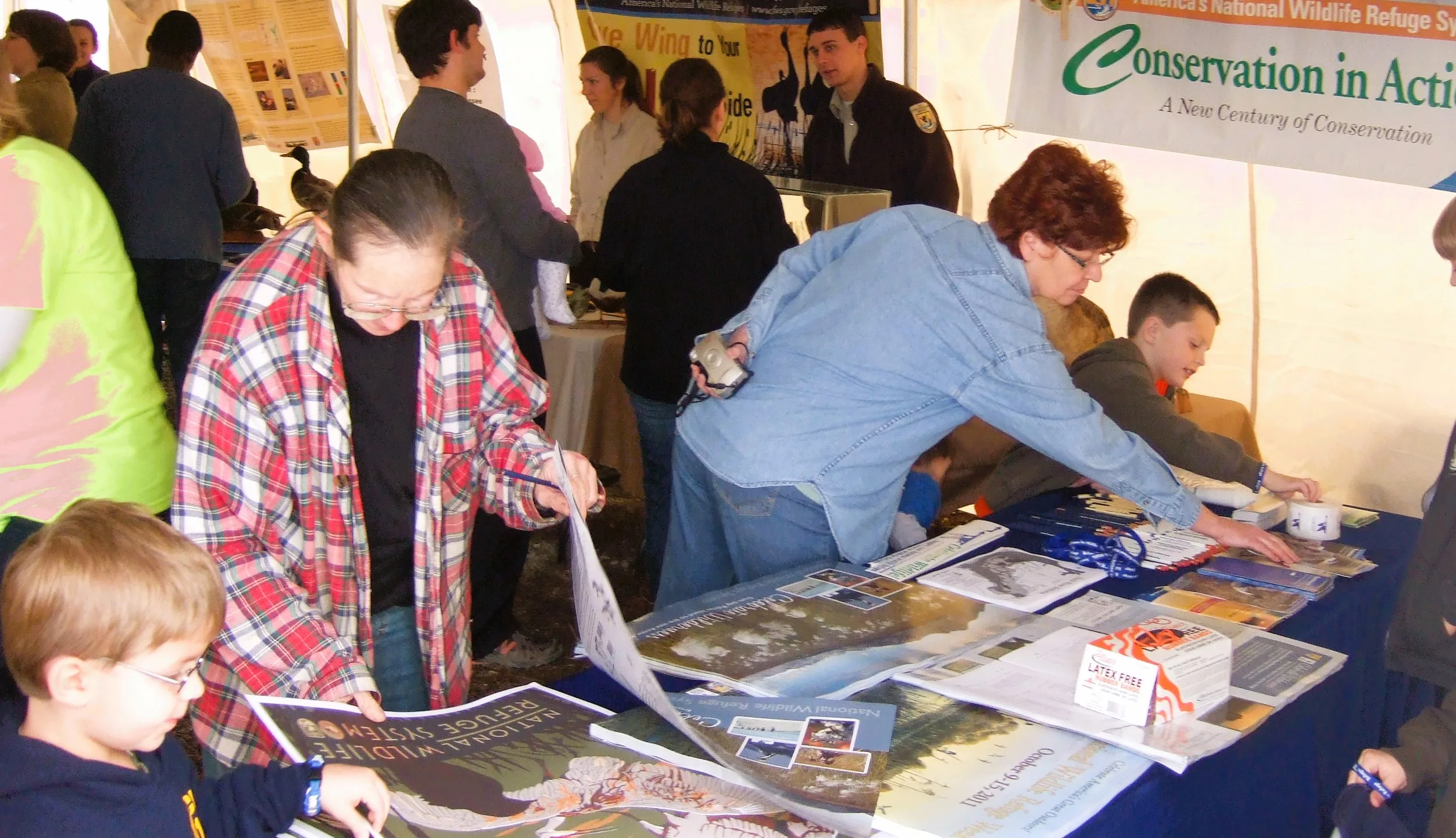
Springville, Tenn.–Back by popular demand, the Tennessee National Wildlife Refuge will once again host its Annual Bald Eagle/Waterfowl Tour from noon to 5 p.m. Saturday February 3rd. This event offers a free public opportunity to enjoy an afternoon to view waterfowl and wildlife on the refuge at the Duck River Bottoms, located in Humphreys County at 550 Refuge Lane in New Johnsonville. This area of the refuge is located a little less than a 2-hour drive from Nashville, and 2 ½ hours from Memphis.
Bring the whole family and enjoy a scenic afternoon, compliments of the Tennessee National Wildlife Refuge and Friends of Tennessee Refuge.
Whereas Refuge Lane and Pintail Point Observation Deck at the Duck River Bottoms are always open to view wildlife every day of the year, some of this area of the refuge is seasonally closed during the winter to limit disturbance to the visiting waterfowl. However, for this one afternoon, the refuge staff will open several of these roads up to the public to offer a glimpse into the heart of the refuge during winter waterfowl season. As in years past, the Blue Goose Boulevard interpretive wildlife drive will be open to offer a two-mile self-guided tour. In addition, guided bus tours with refuge staff will be available this year to go deeper into the bottoms area. These bus tours will be first come first serve and will start and end at the main event parking lot off Refuge Lane beginning at 12:30 and 3:00 pm.
In the past, several hundred people attend each year seeing tens of thousands of waterfowl and each tour bus counts numerous bald eagles. Along with views of waterfowl and bald eagles, the refuge offers opportunities to see white-tailed deer, wild turkey, many species of hawks, great blue herons and great egrets, and many other kinds of wildlife.
Refuge staff and volunteers will be available at the main event tent just past the entrance on Refuge Lane. Staff will be on hand to answer questions, hand out maps for the self-guided auto tour route, and direct you to the guided tour buses. At this heated tent, staff will also have several items of interest concerning waterfowl and managing their wetland habitats. The staff will also be explaining bird identification, refuge operations and management, and answering any questions you may have during your visit.
The Friends of the Tennessee National Wildlife Refuge will also be offering complimentary hot apple cider and cookies to the visiting public, as well as telling folks about other wonderful events and opportunities happening at the refuge.
The refuge at Duck River Bottoms is about 4 miles south of New Johnsonville. From Highway 70 in New Johnsonville, turn south on Long Street and continue for 2.6 miles to the intersection of old State Route 1 and Long Street. Turn left on State Route 1, go for 0.2 miles, then make a sharp right on Hickman Road. Follow Hickman Road for 0.6 miles to Refuge Lane. Turn left on Refuge Lane into the refuge. We will have signs posted to help you find your way.
To enhance your viewing opportunities, it is highly recommended to bring a pair of binoculars, if available, and remember to dress warmly for winter weather. On the bus tour, refuge binoculars will be available to loan if needed. If you have questions about the waterfowl tour, please call the Headquarters at 731-642-2091, extension 303 or e-mail Joan Howe at Joan_Howe@fws.gov. Should there be last minute wintery weather or for updates on the event, be sure to check out our Facebook page at https://www.facebook.com/
Tennessee National Wildlife Refuge, encompassing 51,358 acres of water, forests, farmland and grasslands, is located on and around Kentucky Lake. Established in 1945, the refuge is managed by the U.S. Fish & Wildlife Service as an important resting and feeding area for wintering waterfowl and other migratory birds.
This year the waterfowl have shown up late as the drought affected the use of the refuge. However, with the current cold snap and snowy weather, the refuge has had a huge influx of waterfowl and other birds. It is also a winter haven for bald eagles with at least a dozen active bald eagle nests documented on the refuge. Considered by some to be the very heart of the refuge, the Duck River Bottoms area encompasses roughly 5,000 acres of prime habitats for overwintering migratory birds.
The refuge’s three units, the Duck River, Big Sandy and Busseltown stretch along 65 miles of the Tennessee River. The Tennessee National Wildlife Refuge is one of 570 refuges nationwide totaling more than 150 million acres under the management of the U.S. Fish & Wildlife Service.
Photo: A large crowd attends a previous Bald Eagle/Waterfowl event at the Duck River Bottoms area of the refuge.



